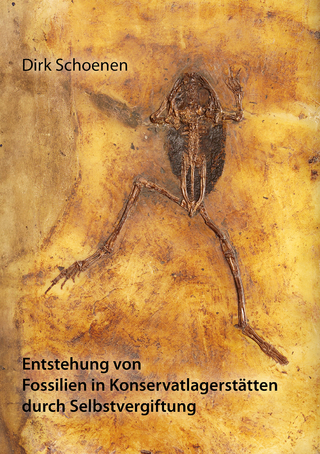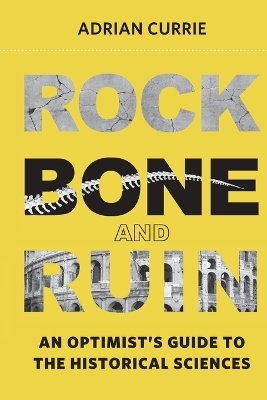
Down By The River
Oxbow Books (Verlag)
978-1-78570-168-9 (ISBN)
East Anglia has long been known for its internationally significant cultural and environmental Palaeolithic archaeology, often overshadowing the potential of its Holocene resource. This volume details the results of 8 years of palaeoenvironmental, archaeological and geoarchaeological investigations focused on the post-glacial history and evolution of the Suffolk river valleys, funded by Historic England and a number of commercial developers. The volume illustrates the largely untapped research potential of the region and provides information concerning the timing, pattern and process of alluvial development, landscape change, and human activity. The highlight of these investigations was the excavation and associated analyses of three well-preserved later prehistoric timber alignments and their environmental records, discovered during flood alleviation works on
the floodplain of the lower Waveney Valley. As well as documenting these internationally significant remains, the research described includes innovative approaches to wetland archaeological and palaeoenvironmental study, highlighting important methodological considerations with respect to radiocarbon dating and chronology, applying novel geophysical approaches to site prospection, and recording wooden artefacts using 3-D laser scanning.
The volume also discusses the results of groundwater monitoring of sediments containing the late prehistoric timber alignment at Beccles and considers the longer-term preservation potential of these fragile remains, which – as with other wetland archaeological sites – are at ever increasing risk from development pressures, as well as the longer term impacts of climate and environmental change.
Andy J. Howard is a Quaternary geologist with over 20 years’ experience of investigating and unravelling the geoarchaeological histories of river valleys. He now runs his own landscape research consultancy as well as holding a Honorary Fellowship within the Department of Archaeology at the University of Durham. Henry Chapman is Senior Lecturer in Archaeology at the University of Birmingham. He specialises in later prehistory, wetland archaeology and the application of GIS and other computer methods to the study of the past. Benjamin Gearey is Lecturer in Environmental Archaeology at University College Cork, Ireland. He has research interests in palaeoecology, wetland archaeology and alluvial geoarchaeology.
CONTENTS
List of contributors
Summary
Foreign language summaries
1. Introduction: Archaeological and Palaeoecological Research in East Anglia
1.1 Introduction
1.2 Physical setting and the Suffolk Rivers
1.3 The Suffolk Rivers: archaeo-environmental potential and threats
1.4 Outline of this monograph
1.5 The Suffolk River Valleys Project (2007)
1.6 Commercial Palaeoenvironmental and Geoarchaeological Study in the Suffolk River Valleys (2005-2012)
1.7. Archaeological excavations and analyses in the Lower Waveney Valley (Beccles, Barsham and Geldeston)
1.8 Methodologies
2. The Suffolk River Valleys Project (SRVP) Phases I and II (2006-2008)
2.1 Introduction
2.2 Study site selection and methodologies
2.3 SRVP Field work, Palaeoenvironmental Assessments and Radiocarbon Dating
2.4 Discussion
2.5 Summary: The SRVP Phases I and II
3. Palaeoenvironmental and Geoarchaeological Investigations of the Suffolk River Valleys: Birmingham Archaeo-Environmental Commercial Projects 2005-2012
3.1 Introduction
3.2 The River Gipping
3.3 The River Stour
3.4 The River Lark
3.5 The East Coast of Suffolk
3.6 Discussion: Palaeoenvironmental and Geoarchaeological Evidence from Commercial Projects in the Suffolk River Valleys
4. Archaeological Excavations and Analyses of Late Prehistoric Timber Alignments in the Waveney Valley: The Beccles Project (2006-2012)
4.1 Introduction
4.2 Beccles: Summary of excavations 2006 (BCC-043) and 2007 (BA1472)
4.3 The Beccles Project (2006-2012): Understanding, Contextualising and Managing a later Iron Age Wetland Site
4.4 Excavations and Analyses
4.5 Results
4.6 Post-excavation Analyses
5. Excavations at Barsham (2007) and Geldeston (2011)
5.1 Introduction
5.2 Excavations at Barsham (2007)
5.3 Excavations at Geldeston, Norfolk (2011)
5.4 Summary: late prehistoric timber alignments at Barsham Marshes and Geldeston
6: Assessing the Preservation of the Archaeo-Environmental Resource at Beccles: Implications for Sustainable Management and Preservation In Situ
6.1 Introduction
6.2 Assessing the preservation of the organic archaeology at Beccles
6.3 Assessing the preservation of the on-site palaeoenvironmental record
6.4 Watertable Monitoring
6.5 Barsham: condition assessment of two timber stakes
6.6 Discussion: heritage management implications for Beccles
6.7 Summary: the preservation and future management of wetland sites in the Waveney Valley
7: Holocene Environments and Human Activity in the Suffolk River Valleys: Synthesis, Discussion and Conclusions
7.1 Introduction
7.2 Late Quaternary environments, the archaeological record and human activity in Suffolk
7.3 The Waveney valley later prehistoric timber alignments in context
7.4 Dividing, defining or uniting the landscape? Post and stake alignments in prehistory
7.5 Conclusions: The function of the Waveney valley timber alignments
7.6 Wetland Archaeology: testing novel techniques for the 21st Century
7.7 Public engagement with the archaeology of the Waveney valley
7.8 Summary and Conclusions: The Suffolk River Valleys in the Past and Future
References
Appendix 1: Beccles Marshes Management Plan
Index
| Erscheint lt. Verlag | 22.1.2016 |
|---|---|
| Verlagsort | Oxford |
| Sprache | englisch |
| Maße | 297 x 210 mm |
| Themenwelt | Geisteswissenschaften ► Archäologie |
| Naturwissenschaften ► Geowissenschaften ► Mineralogie / Paläontologie | |
| ISBN-10 | 1-78570-168-1 / 1785701681 |
| ISBN-13 | 978-1-78570-168-9 / 9781785701689 |
| Zustand | Neuware |
| Haben Sie eine Frage zum Produkt? |
aus dem Bereich


